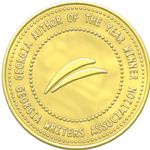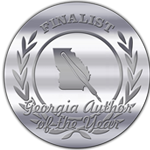Finishing the manuscript is just the start of the Business of Writing. (From a blog post for Bookmasters.com)
So you’ve finally finished your masterpiece, read and edited and proofed and reread the carefully typed manuscript, and now it’s ready for the two most wonderful words in a writer’s vocabulary: The End! And soon, you’ll be querying agents and sending off submissions, receiving an offer of representation, and watching a bidding war between all the top publishers in your genre. Hey, it could happen!
But before it does and before you type “The End” at the bottom of your final page, you’ve still got some work to do. Because finishing the manuscript is just the start of the business of writing. Now you have a synopsis to write, and you may find it even harder than writing the work on which it’s based. And doing it right may mean the difference between landing a book deal and languishing in the slush pile of an agent’s office. Even if you’re intent on self-publishing, a synopsis is elemental to the success of your book.
So what’s a synopsis? And how do you write one? And what do you do with it once it’s done?
According to Peter Rubie, CEO of Fine Print Literary in New York, “A synopsis is a narrative summation of your fiction, telling the story rather than showing it.” It’s your story as told to a child, a simple description of the beginning, middle, and end of the plot and how the characters make it happen. If your story were a house, a synopsis is the way it would look without all the décor, emptied of furniture and rugs and knickknacks until it’s nothing but walls and doors and a roof overhead.
But why build a house only to deconstruct it? Because those agents and editors that you hope to impress are looking for something more elemental than a beautiful writing style—they’re looking for a story they can sell and they don’t have much time to find it. With a synopsis, they can make a quick judgment about whether your book is the right fit for them. And for you as a writer, the benefit of gutting your careful construction down to its framing is that you can see where things are out of plumb or not nailed in just right. Are the plot progressions logical? Have you left a character with no way to get from point A to point C? Did the story in your head really make it onto paper? Without all the interior decorating, you can see where the house may have flaws—and fix them before you put it on the market.
Then once you’ve corrected the flaws and your book is signed and sold, the synopsis will serve another purpose, becoming the basis for book blurbs, press releases, and talking points for author interviews. The graphic artist will use it as inspiration for your cover design. The publisher and distributor will use it in their marketing to bookstores and libraries. For most of the publishing professionals who deal with your book, your synopsis IS your story. The same is true even if you choose to self-publish your work, as you will still need blurbs and press releases and talking points as you take on the tremendous task of doing your own marketing.
Publishing Consultant Jane Friedman has a good step-by-step on how to write a synopsis at https://www.janefriedman.com/how-to-write-a-novel-synopsis/. As you did with your book, take your time to do it well, and you’ll have finally earned the right to proudly say: “The End!”

